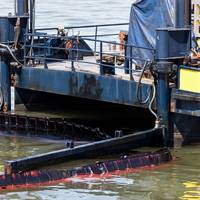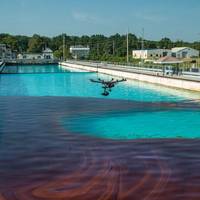Predictability, or “Call your Designated Responder Early and Often”

Predictability is the aim of every human, company, or society.Humanity simply strives to increase its level of predictability whether as a person, or as a group of people. When humans attain a certain level of predictability, their hope for the future goes up and their level of anxiety goes down.Oddly, conservatives and progressives both strive for predictability, they just do it in different ways. A conservative will say: If nothing changes, then my predictability for the future will go up.
New Oil Spill Tech Solutions Put to the Test

No two oil spill response operations are the same. Each can present new and even tougher challenges for spill responders as they detect, contain and recover spilled oil. Diverse aspects affecting oil spill response operations can be the physical environment, spill monitoring, use of chemical dispersants, and the availability of proper technology for the situation.Some challenges have been met through research and technology development of techniques for dealing with spills. However…
Ampol Completes Oil Recovery Equipment Testing

Oil Stop Division of American Pollution Control Corp. (AMPOL) completed phase two of its contract with the US Coast Guard Research and Development Center for the testing of Submerged Oil Recovery Equipment. The contract was completed in November after successfully executing a variety of tests at the OHMSETT facility in Leonardo, New Jersey. The OHMSETT facility allows industry professionals to work with real oil in simulated environments. As a result of testing, adaptations were made to AMPOL’s Oil Stop Bottom Oil Recovery System (OSBORS).
Feature: Offshore Drilling: 5-Year Projection is $189B
"Over the next five years it is expected that 15,000 offshore wells will be drilled worldwide, at a total cost of some $189 billion. Of these wells nearly 4,500 will be exploratory costing $75 billion, and around 10,500 will be development, costing $114bn. It is estimated that drilling and completion expenditure in 2003 was $36 billion. Spending levels are expected to grow somewhat over the next two years and then decline slightly, stabilising at about $37 billion per year." These are among the findings of the second edition of The World Offshore Drilling Report, published by Douglas-Westwood. The largest change that is forecast by the energy analysts is continuing growth in deepwater drilling (over 500 m water depth) which contrasts with a long-term decline in shallow water activity.
Feature: World Offshore Drilling Activity: A 5-Year Outlook
The following is an outline of some of the key conclusions of the "The World Offshore Drilling Report 2003-2007" recently published by energy analysts Douglas-Westwood. Offshore drilling has, for the last 30 years, been the driving force behind growth in oil and gas industry activity and production. Beginning in the 1960s, after global opportunities on land had begun to decline, offshore drilling levels grew rapidly, peaking in 1981 following two decades of technology improvements and a decade of energy price rises. Since then, offshore drilling levels have broadly stabilized on a flat trend, albeit moving up or down in response to fluctuations in energy demand and oil price.





